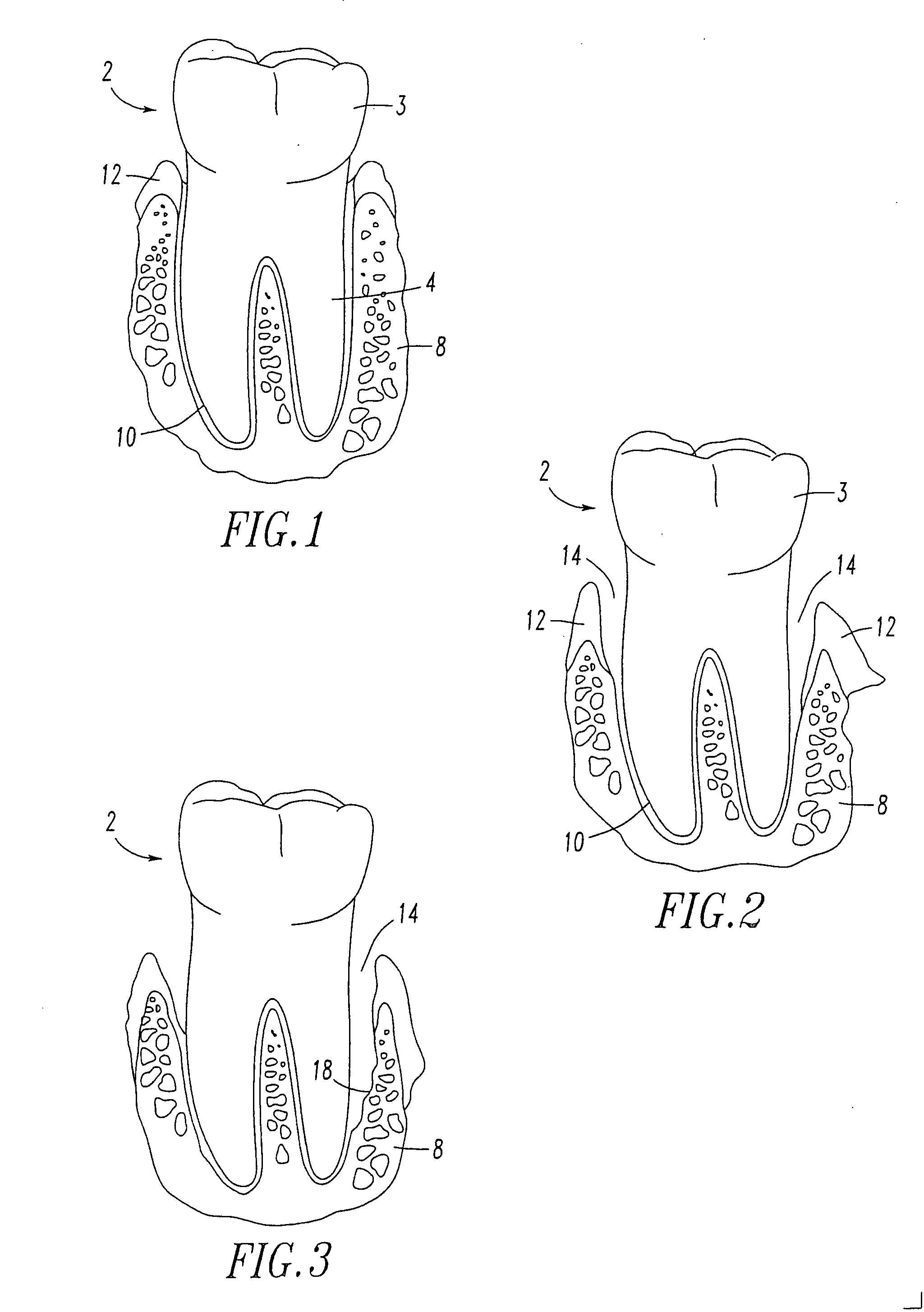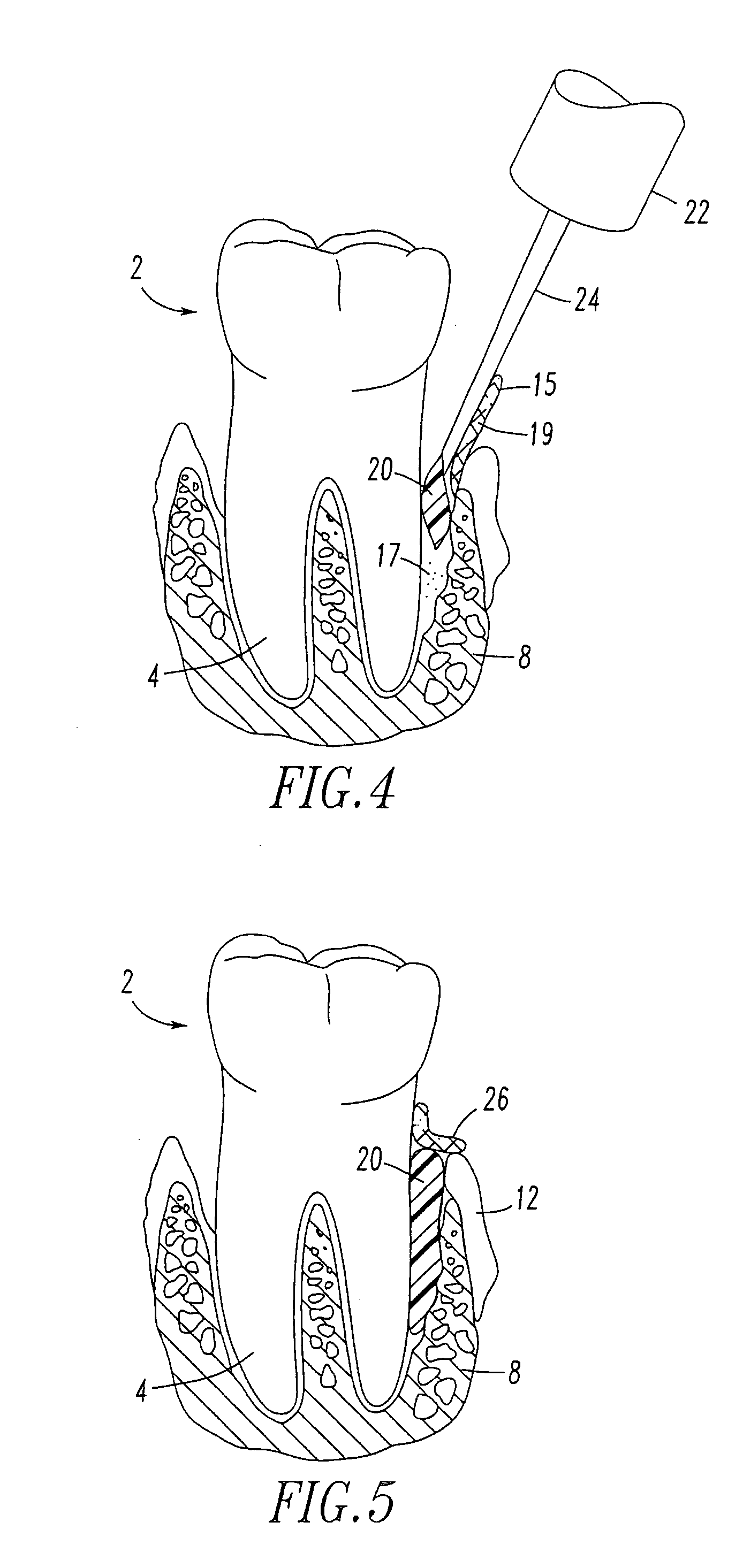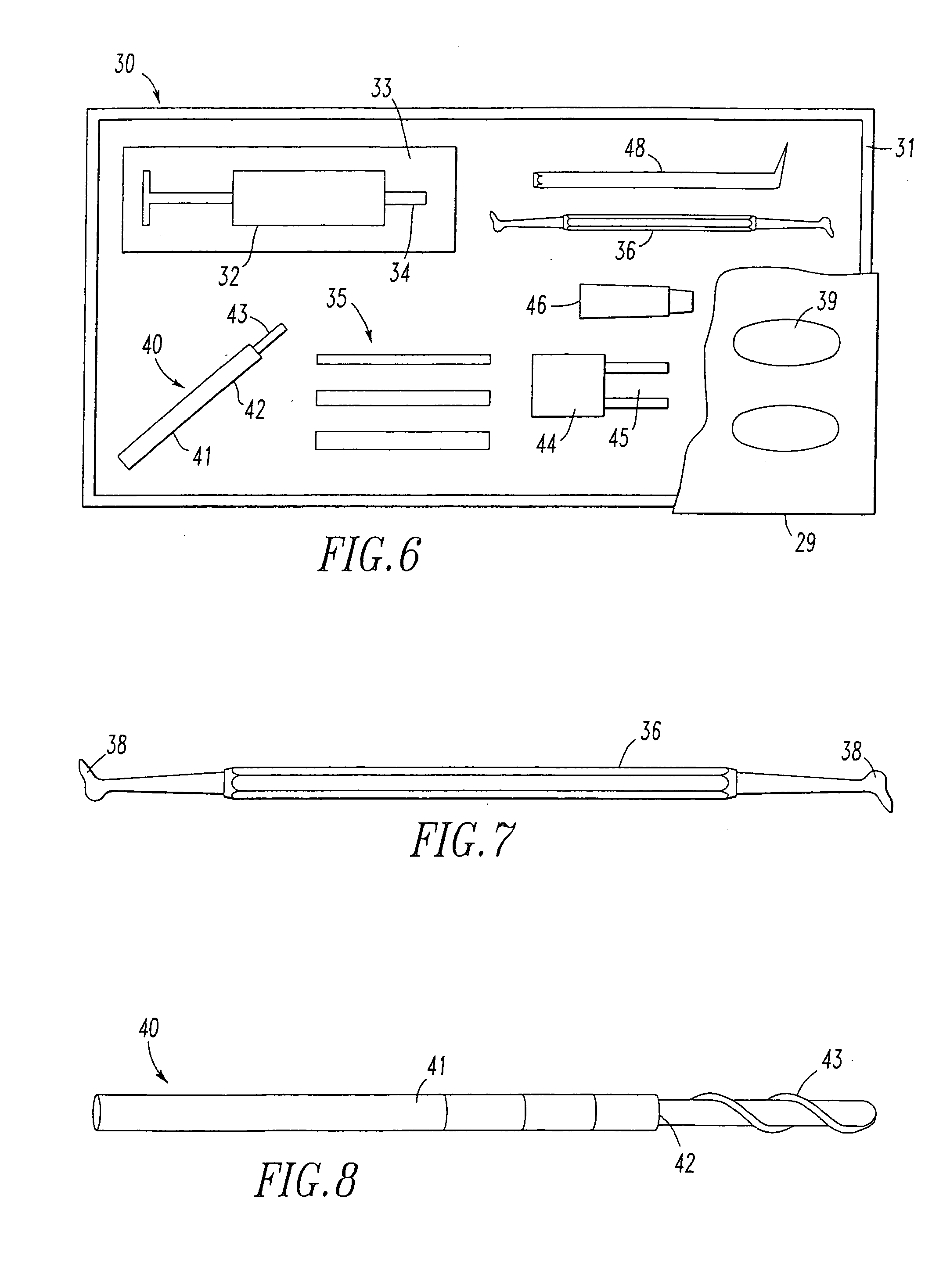Periodontal regeneration composition and method of using same
a technology of regeneration composition and composition, applied in the direction of impression caps, prostheses, peptide/protein ingredients, etc., can solve the problems of long healing time, increased infection possibility, and sensitive teeth
- Summary
- Abstract
- Description
- Claims
- Application Information
AI Technical Summary
Benefits of technology
Problems solved by technology
Method used
Image
Examples
Embodiment Construction
[0026] As can be seen in FIG. 1 a tooth 2 has a crown 3 and root 4. The alveolar bone 8 surrounds the root 4. There is a periodontal ligament 10 around much of the root 4 and gingiva 12 surrounds the upper part of the root and the base of the crown 3. There is a pocket 14 between the gingiva 12 and the tooth 2. In a healthy tooth shown in FIG. 1 this pocket 14 is very shallow, typically one to three millimeters. Bacteria colonize the pocket. The bacteria cause the pocket 14 to deepen as shown in FIG. 2. As periodontal disease progresses the bacteria cause inflammation that destroys the ligament and bone creating depressions 18 in the bone shown in FIG. 3.
[0027] The conventional way of treating advanced periodontal disease is to create incisions to reflect the gingiva 12, remove the damaged bone with hand instruments or sand area 18 with rotary burs, remove all debris from the sanding, place a bone growth material adjacent the sanded bone surfaces and suture the gingiva. The standar...
PUM
| Property | Measurement | Unit |
|---|---|---|
| length | aaaaa | aaaaa |
| volume | aaaaa | aaaaa |
| diameter | aaaaa | aaaaa |
Abstract
Description
Claims
Application Information
 Login to View More
Login to View More - R&D
- Intellectual Property
- Life Sciences
- Materials
- Tech Scout
- Unparalleled Data Quality
- Higher Quality Content
- 60% Fewer Hallucinations
Browse by: Latest US Patents, China's latest patents, Technical Efficacy Thesaurus, Application Domain, Technology Topic, Popular Technical Reports.
© 2025 PatSnap. All rights reserved.Legal|Privacy policy|Modern Slavery Act Transparency Statement|Sitemap|About US| Contact US: help@patsnap.com



